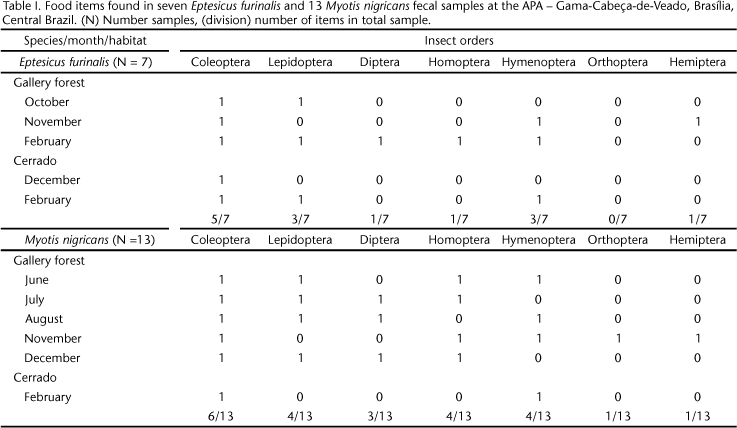We examined food habits of Vespertilionidae bats Myotis nigricans (Schinz, 1821) and Eptesicus furinalis (d'Orbigny, 1847) by fecal analysis in cerrado sensu stricto and gallery forests, within APA - Gama-Cabeça-de-Veado, Brasília, Distrito Federal, Brazil. Out of 20 fecal samples collected, seven were of Eptesicus furinalis and 13 of Myotis nigricans. The diet of E. furinalis included six orders of insects: Coleoptera (5/7 by items presence), Lepidoptera and Hymenoptera (3/7), Diptera, Hemiptera and Homoptera (1/7). The diet of M. nigricans included all the main orders consumed by E. furinalis (6/13, 4/13, 4/13, 3/13, 1/13, and 4/13 respectively) and one other order: Orthoptera (1/13). Homoptera, Diptera and Orthoptera were collected only in bats captured in gallery forest. There is 80% of overlap in the diet of these two species. Predation on species of Scarabeidae, Hesperiidae, Sphingidae and Saturniidae families confirms bats potential as biological control agents of pests in agricultural ecosystems.
Biological pest control; insectivory; mammals; niche

